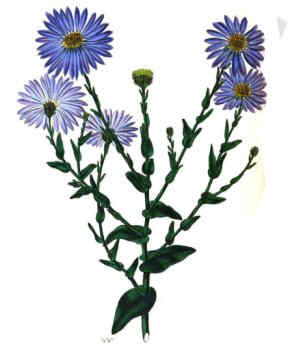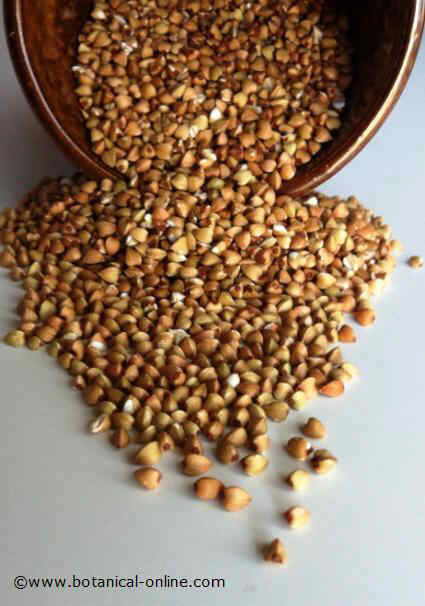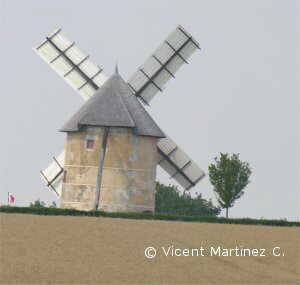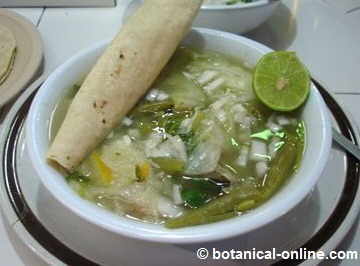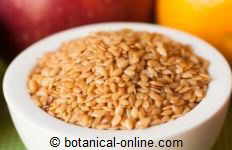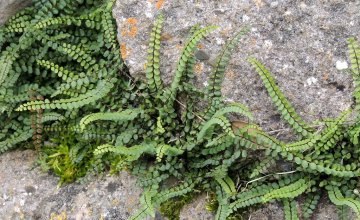How does common sundew catch and devour its preys?
Characteristics of common sundew (Drosera rotundifolia)
Common English name: Sundew, Roundleaved sundew, Moor-grass
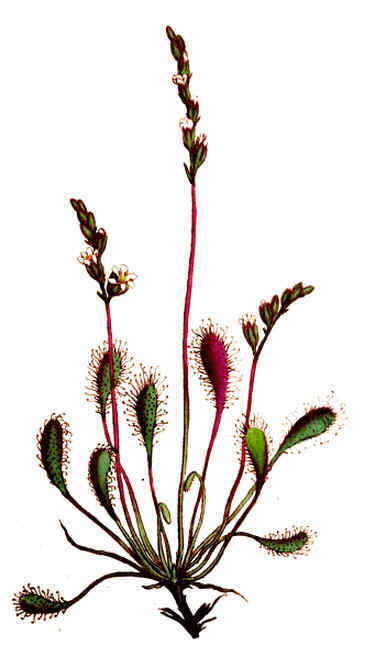
A drawing of the plant
Scientific name: Drosera rotundifolia L.
Etymology: Drosera derives from the Greek word “droseros”, meaning dew, referring to glandular hairs that look like dew drops on the plant. “Rotundifolia” refers to its rounded leaves.
Family: Droseraceae.
Origin: Europe.
Where can you find common sundew plants
There are common sundew polants in wet places, swamps, marshes, ponds, siliceous strongly acid soils, poor soils. Often rooted on Sphagnum mosses. Sundew gets the nitrogenous nutrients needs from small insects, as it is a carnivorous plant.
Distribution: Europe, present in the UK but rarely in the Mediterranean region. North Asia and North America. Currently protected in many places and its collection is prohibited.
Common sundew description
Perennial plant with almost nonexistent stem; rhizomic black and fibrous roots. Rosette shaped leaves 2 to 10cm. in diameter. The leaves are rounded or concave, 0.5 – 1cm. wide, with long petioles which joins the stem. The whole plant is covered with transparent hairs, which in limbo are bright red or ruby. The hairs on the leaves are long and curved at the ends, and, as they approach to the center of the leaf blade, they are shorter and perpendicular.
Plant flowering occurs in summer, between June and August. From the center of the rosette comes a reddish leafless flowering stem (scape), where flowers are arranged in racemes. The flowers are white, hermaphrodite, 5 sepals and 5 petals. The whole plant with flowers does not reach up 15cm. The fruit is an ovate capsule. The plant loses its aerial part in late fall to sprout the following year.
 History of sundew
History of sundew
Because tit is not a Mediterranean plant, the great doctors of history, as Hippocrates and Dioscorides, did not speak of it in his treatises.
However, Darwin, along with the botanist William Jackson Hooke, investigated much about how this genus of carnivorous plants nourished:
Nutrition of drosera: How does common sundew obtain its food?
This is an insectivorous plant that feeds on small insects like flies and mosquitoes. In the apical part of the hairs, there are glands that secrete a mucilaginous acre substance. This attracts insects and smears them in order the insects to get caught when they they come into contact with them
Drosera leaves are always coated with viscous substance, and its secretions increase when there is more sunlight. For this feature, in many languages sundew is called “sundew plant”.
This secretion attracts insects, such as makes mosquitoes mites, etc.. that are soaked and bolted to the floor. To digest the animals that have been trapped, surrounding hairs move and increase its secretions, folding and forming a true “jail” for the trapped animal. Secretions contact with the insect, containing enzymes that act digesting animal.
The process of folding and movement of the hairs occurs when the plant detects the presence of nitrogenous substances (for example, by the presence of proteins in an insect which has been engaged). Darwin found that the leaves of sundew were so sensitive to nitrogen compounds, which any small bug was detected.
These studies also highlight the surprising sensitivity of sundew, that without a specialized nervous system, reacts to certain alkaloids and toxic at very low doses.
Used parts
– The entire plant when it blooms in summer.
In some places it is a protected plant and harvest is prohibited. In pharmacies and herbal remedies are available standardized extract.
Drosera uses
– Medicinal Uses: Sundew is one of the most prized plants to treat diseases of the respiratory system as a expectorant, antitussive and demulcent remedy. Externally, The secretions of the leaves (“dew”) because of their rubefacient properties, can be applied to warts, corns and bunions can help treat these ailments.
* More information about the medicinal properties of the sundew.
Composition of sundew
- Xylose, mannose, mucilage (4% in secretions)
- Vitamin C
- Quinones: plumbagone or plumbagin (5hydroxy2methyl1,4naphthoquinone) (1%), roseliside (7metilhidrojuglona 4Oglucoside), 1,4naphthoquinone7 metiljuglone. Quinones are the active principle of the sundew, and they can be found in all parts of the plant (12%).
- Flavonoids: hyperoside, quercetin, kaempferol (especially flowers), quercetin, myricetin, carotenoids.
- Organic acids: butyric acid, ellagic acid, formic acid, gallic acid, malic acid, citric, propionic, benzoic.
- Enzymes: plant secretions contain enzymes, proteases and pepsinases, which help to digest trapped animals.
- Tannins (1.5%)
BOTANICAL CLASSIFICATION | |
kingdom | Plantae – Plants |
Subkingdom | Tracheobionta |
Superdivision | Spermatophyta |
Division | Magnoliophyta |
Class | Magnoliopsida |
Subclass | Dilleniidae |
Order | Nepenthales |
Family | Droseraceae |
Gender | Drosera |
Species | D. rotundifolia |
![]() More information on common sundew.
More information on common sundew.

 History of sundew
History of sundew